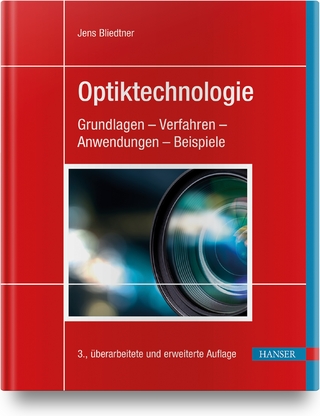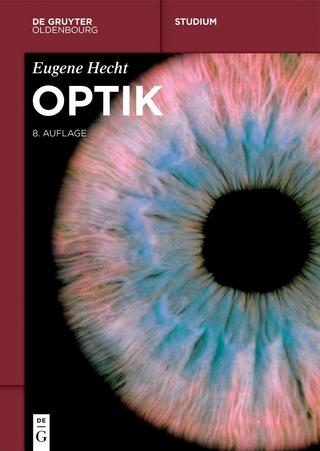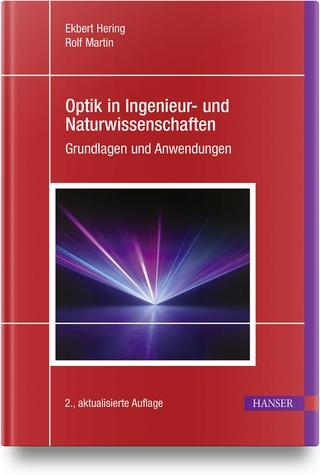
Static Electrification
Springer-Verlag Berlin and Heidelberg GmbH & Co. K
978-3-540-02322-7 (ISBN)
- Titel ist leider vergriffen;
keine Neuauflage - Artikel merken
Trained in his early years as a chemist, and brought into contact with some aspects of colloidal chemistry involving electrokinetic potentials, cataphoresis, and spray electrification, thc author had his curiosity aroused by a number of these strange phenomena. Entering physics as a life career coincident with the development of the earl)' studies in atomic structure, in part through his teacher, R. A.
I. Static electrification by electrolytic process.- A. Basic principles in terms of galvanic action from metal surfaces.- B. Nature of systems leading to charge separation and their limitations.- 1. Flow charging systems.- 2. Limited contact charging.- C. Do adequate aqueous surface films exist for electrolytic charging ?.- D. Past evidence of electrolytic charging.- 1. Electrolytic flow electrification.- 2. Electrolytic flow charging in impacts of liquid jets on surfaces.- 3. Electrolytic contact charging.- E. Electrical endosmosis, streaming potentials, and cataphoresis (Verified aspects of electrolytic charging).- 1. Electrical endosmosis.- 2. The streaming potential.- 3. Cataphoresis.- F. The more accurate calculation of the double layer characteristics including ions of both signs.- G. The Workman-Reynolds freezing potential.- H. Summary and conclusions.- II. The contact potential difference or volta potential.- A. Introduction.- B. The metallic state energy bands, the Fermi law and basic principles.- C. Surface structure and the work function in relation to the Fermi level.- D. Influences modifying the work function.- E. The contact potential difference.- F. The measurement of contact potential and/or work function.- 1. Thermionic emission.- 2. Calorimetric measurement of work function.- 3. The photoelectric studies.- 4. Contact potential difference measurements.- G. Discussion and conclusion.- III. Static charging by spray electrification.- A. Introduction.- B. The Existence of an electrical double layer at gas-liquid interfaces.- 1. The studies of Coehn on double layers as related to dielectric constant.- 2. The electrical double layer in cataphoresis.- 3. Cataphoresis and the true nature of the double layer.- 4. The total potential difference at the water-air interface.- C. Relative potentials in double layers of water in relation to surface tension, for salt, acid and organic solutes.- D. The spray electrification phenomena.- 1. The studies of Lenard and his school.- 2. The studies of Chapman.- E. Spray electrification of water in relation to thunderstorm electrification.- F. Homogeneous or symmetrical charging of liquid droplets on dispersion.- 1. The spray and dust electrical analyses of Hansen and Kunkel using the Hopper and Laby technique.- 2. The measurements of Dodd on liquids.- 3. Significance of Dodd's results.- G. Asymmetric charge distribution of droplets of micron size from bursting of small air bubbles in concentrated solutions.- H. Conclusions.- IV. Mechanisms of electrification on solid-solid contact.- A. Introduction.- B. Quantitative measuring techniques and the influence of electrical fields.- 1. Simple studies.- 2. The action of external fields on charging.- C. Initial investigation of controlled contact electrification of metal-inorganic insulator systems.- D. Electrification of dusts on dispersion and impact on surfaces.- 1. Experimental techniques.- 2. Observations.- E. The contact charging by rolling of inorganic insulator spheres on metal surfaces.- a) Design of apparatus.- b) Experimental results on fused quartz.- c) Effect of gas pressure.- d) The charging rate.- e) Borosilicate glass.- f) Interpretation of charging data.- g) Primary process of charge transfer.- h) Secondary processes governing redistribution of charge.- i) Surface conduction.- F. Extension of Peterson's investigations by Wagner.- 1. Experimental techniques.- 2. Basic theory.- 3. Experimental observations.- a) Saturation charge.- b) Single crystal studies on quartz.- c) Aluminum oxide, synthetic single crystals, (white sapphire).- d) Single crystals of alkali halides.- e) Magnesium oxide single crystals (periclase).- f) Effect of surface finish.- g) High saturation charges.- h) Charging and work function.- i) Leakage currents.- j) Charging under ultra high vacuum with measured work function.- 4. Interpretation of results.- a) Surface and bulk conductivity.- b) Dependence of charging rate on surface exposed.- c) Maximum or saturation charge.- ?) Effect of surface roughness.- ?) Effect of electrostatic forces.- d) The true charge separation qs and back discharge.- e) Influence of rolling speed on qs.- f) The nature of charge exchange mechanisms.- 1. For quartz - 2. For Al2O3 - 3. For alkali halides - 4. MgO.- G. Contact charging of ice on ice.- H. Other possible charge transfer mechanisms.- 1. Asymmetric rubbing, true tribo electrification.- 2. The Henry model for contact charging of solids having a common ion.- 3. The charging of solids by rupture of surface dipoles.- 4. Luminosity in contact charging processes.- V. The generation of static charges by processes involving ionization of gases and miscellaneous other matters.- A. Introduction.- B. Various gaseous electronic mechanisms.- 1. Photoelectric and thermionic emission of carriers.- 2. IJnipolar corona discharges.- 3. The effect of plasmas from arcs and glows in static generation.- 4. Induction charging in auxiliary fields.- C. Static elimination.- 1. Introduction, grounding of all conductors.- 2. Reduction by increasing conductivity of insulators.- a) Volume conductivity.- b) Surface conductivity.- c) Agencies aiding surface os volume conductivity.- 3. The use of electrostatic dischargers.- a) By self-discharge.- b) By use of floating insulating systems.- c) Ions from electrostatic sources.- ?) By ions of both signs.- ?) By monitored ions of one sign.- d) The use of radioactive ionizing radiations.- e) The problems of elimination in dust and spray electrification.- f) Precipitation static in aircraft.- D. Thunderstorm electrification.- a) Capture or fission of drops.- b) Spray charging.- c) Ice-ice impact.- d) Separation through freezing potentials.- E. Protection against lightning stroke.- Author Index.
| Erscheint lt. Verlag | 1.1.1958 |
|---|---|
| Zusatzinfo | 20 black & white illustrations, biography |
| Verlagsort | Berlin |
| Sprache | englisch |
| Gewicht | 650 g |
| Themenwelt | Naturwissenschaften ► Physik / Astronomie ► Optik |
| ISBN-10 | 3-540-02322-4 / 3540023224 |
| ISBN-13 | 978-3-540-02322-7 / 9783540023227 |
| Zustand | Neuware |
| Haben Sie eine Frage zum Produkt? |
aus dem Bereich


